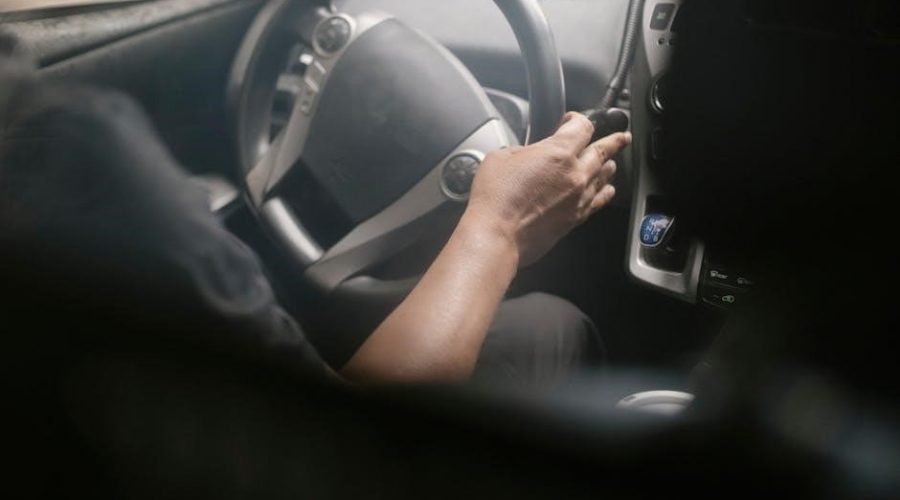Converting a manual transmission to automatic is a complex process requiring precise compatibility checks, specialized tools, and professional expertise. While it offers convenience, the cost and effort involved often make buyers consider purchasing an automatic vehicle instead. This guide explores the intricacies, costs, and considerations for those contemplating this significant automotive modification.
Overview of the Conversion Process
Converting a manual transmission to automatic involves replacing the manual gearbox with a compatible automatic transmission, torque converter, and necessary electronic components. The process requires removing the manual transmission, installing the automatic unit, and integrating systems like the ECU, shifter, and wiring harness. Additional components such as the console cover and sports button may also be needed. The complexity varies by vehicle, and professional expertise is often essential to ensure compatibility and proper functionality. Labor costs and parts can range widely, making it a significant undertaking.
Why Convert from Manual to Automatic?
Converting from manual to automatic offers enhanced convenience, especially in heavy traffic, reducing driver fatigue. Automatics provide smoother acceleration and ease of use, ideal for urban driving. They also improve performance in off-road conditions and towing scenarios; Additionally, automatic transmissions are more accessible for new drivers or those who prefer a hassle-free driving experience. The conversion appeals to those seeking a more comfortable and modern driving experience, adapting their vehicle to their lifestyle needs and preferences. This shift can significantly enhance overall vehicle usability and satisfaction.
Key Considerations Before Starting the Conversion
Before converting, assess the vehicle’s compatibility with an automatic transmission, including engine and drivetrain suitability. Professional expertise is crucial due to the complexity of the process. Budget considerations are significant, with costs ranging from $15,000 to $30,000 or more. Additionally, legal and insurance implications must be evaluated. The availability of conversion kits, supporting components, and required modifications should be verified. Finally, weigh the benefits against purchasing a pre-equipped automatic vehicle, as conversion may not always be cost-effective or practical.

Understanding Manual and Automatic Transmissions
A manual transmission requires driver input to shift gears, while an automatic uses a torque converter and complex systems to shift automatically. This fundamental difference drives the conversion interest.
How Manual Transmissions Work
A manual transmission operates through a system where the driver uses a clutch pedal and gearshift to manually change gears. The clutch disengages the engine from the transmission, allowing gear shifts without grinding. Drivers select gears based on speed and engine power needs, with lower gears providing more torque for starting and higher gears enabling smoother cruising. Synchromesh technology synchronizes gear speeds for smoother shifts. This mechanical system requires driver skill and coordination to operate effectively, offering control over acceleration and speed through precise gear engagement.
How Automatic Transmissions Work
An automatic transmission uses a torque converter to connect the engine to the gears, eliminating the need for manual clutch operation. The system relies on sensors and hydraulic controls to automatically adjust gears based on driving conditions, such as speed and engine load. A complex set of planetary gears and clutches engages and disengages to provide seamless shifts. The torque converter multiplies torque at low speeds and allows the engine to disconnect from the transmission during deceleration, offering a smooth and driver-friendly experience without manual intervention.
Key Differences Between Manual and Automatic Transmissions
Manual transmissions require driver interaction with a clutch and gearshift, offering control in specific driving conditions. Automatic transmissions shift gears automatically, providing convenience and ease. Manuals are typically more affordable, fuel-efficient, and preferred by enthusiasts for a connected driving experience. Automatics, while costlier, deliver better low-speed torque and are ideal for urban driving. These differences influence driver choice based on preference, lifestyle, and driving habits.
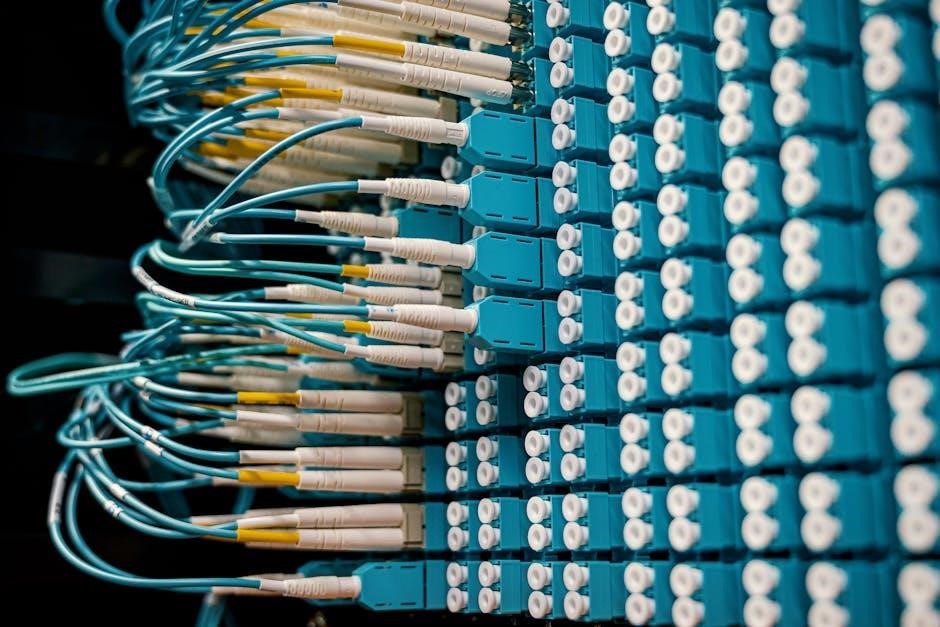
Pros and Cons of Converting to Automatic
Converting to automatic offers enhanced convenience, smoother city driving, and better off-road performance. However, it involves high costs, complex modifications, and potential loss of fuel efficiency.
Advantages of Automatic Transmissions
Automatic transmissions offer unparalleled convenience, eliminating the need for manual gear shifting. This makes driving smoother, especially in heavy traffic or hilly terrain. They reduce driver fatigue, as there’s no constant use of the clutch and gearshift. Automatics also provide better low-speed maneuverability and easier vehicle control for inexperienced drivers. Additionally, they enable faster acceleration in situations like merging onto highways. These benefits make automatic transmissions ideal for city driving, off-road adventures, and drivers seeking a more relaxed driving experience.
Disadvantages of Automatic Transmissions
Automatic transmissions can reduce driving engagement for enthusiasts who enjoy manual control. They may lack the precise driver input of manuals, especially in dynamic driving situations. Additionally, older automatic models often have lower fuel efficiency compared to modern manual counterparts. Resale value can also be affected in markets where manual transmissions are preferred. Furthermore, automatics may experience increased wear on components like the torque converter in heavy stop-and-go traffic, potentially leading to higher repair costs over time compared to manual transmission parts.
Cost-Benefit Analysis of the Conversion
The cost of converting a manual to an automatic transmission can range from $1,000 to $30,000, depending on the vehicle and complexity. This includes labor, parts, and potential upgrades like engine ECU reprogramming. While the conversion offers convenience and broader market appeal, the high initial investment may outweigh long-term benefits for some. Comparatively, purchasing a pre-equipped automatic vehicle could be more cost-effective, especially for older models. Weighing these factors is crucial for making an informed decision.
Cost Implications of the Conversion
Converting a manual to an automatic transmission can cost between $1,000 and $30,000, depending on labor, parts, and vehicle specifics. This investment may outweigh benefits for some, making purchasing a new automatic vehicle more economical.
Estimating the Total Cost of the Conversion
Estimating the total cost of converting a manual to automatic transmission involves considering labor, parts, and compatibility. Costs range from $1,000 to $30,000, depending on the vehicle’s make, model, and year. Labor costs can vary widely, with professional mechanics charging between $500 and $5,000. Parts, including the transmission, ECU, and additional components, add significant expense. Older vehicles may require more extensive modifications, increasing costs. It’s essential to consult a professional for an accurate estimate tailored to your specific vehicle needs.
Factors Influencing the Cost of Conversion
The cost of converting a manual to automatic transmission is influenced by several factors. The vehicle’s make, model, and year play a significant role, as compatibility and complexity vary. Older vehicles often require more extensive modifications, increasing expenses. Labor costs depend on the mechanic’s expertise and location. Additionally, the type of automatic transmission chosen, whether it’s a simple swap or a modern ECU-controlled unit, impacts the total price. Buying a full conversion kit or sourcing individual parts also affects the final cost, making each project unique.
Cost Comparison: Conversion vs. Buying an Automatic Vehicle
Converting a manual to automatic transmission can range from $1,000 to $3,000 or more, depending on the vehicle and complexity. In contrast, buying an automatic car may be more cost-effective, especially if the conversion cost approaches the vehicle’s value. Modern automatic vehicles often come with warranties and advanced features, making them a more practical choice. Additionally, the long-term maintenance and potential issues with a converted transmission may outweigh the initial savings of conversion, making purchasing an automatic vehicle a more financially sensible option.

Technical Aspects of the Conversion
Converting a manual to automatic involves replacing the transmission, ensuring engine compatibility, and adding components like a torque converter. The process is complex, requiring specialized tools and expertise.
Transmission Replacement: Manual to Automatic
Replacing a manual transmission with an automatic involves removing the manual gearbox and installing a compatible automatic unit. This requires ensuring engine compatibility, as not all engines can mate with every automatic transmission. A torque converter must also be installed to replace the clutch, facilitating smooth power delivery. Specialized tools and expertise are essential, as misalignment or improper installation can damage the transmission or engine. Modern conversion kits simplify the process, but professional mechanical knowledge remains crucial for a successful swap.
Engine and Transmission Compatibility
Ensuring engine and transmission compatibility is critical for a successful manual-to-automatic conversion. The engine’s bellhousing bolt pattern, mounting points, and software calibration must align with the automatic transmission. Some engines may require adapter plates or modified engine mounts to accommodate the new transmission. Additionally, the flexplate and torque converter must match the engine’s specifications. Compatibility issues can lead to poor performance or system failure, making it essential to verify all components before installation. Professional consultation is highly recommended to ensure a seamless integration of the engine and automatic transmission.
Additional Components Required for the Conversion
Beyond the automatic transmission, several components are essential for a successful conversion. A compatible torque converter, designed for your engine’s specifications, must be installed to ensure proper power transfer. The flexplate, which connects the engine to the transmission, may need to be replaced or modified. An adapter plate or crossmember might also be required to mount the automatic transmission securely. Additionally, the engine control unit (ECU) often needs reprogramming to work with the new transmission. These components ensure the system operates smoothly and efficiently, making them critical to the conversion process.
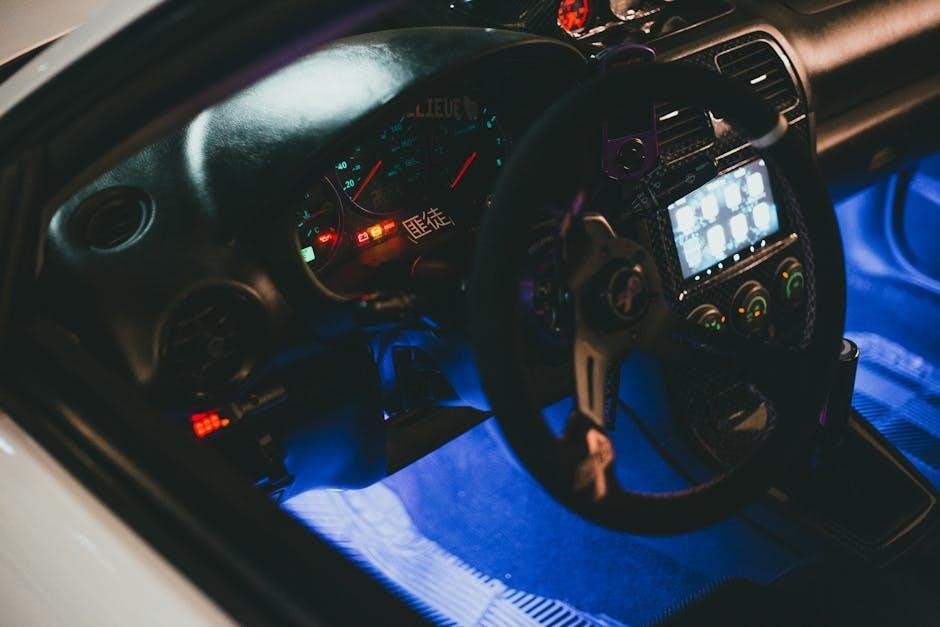
Step-by-Step Conversion Process
Converting from manual to automatic involves removing the manual transmission, installing the automatic unit, and integrating necessary systems like the torque converter and ECU adjustments.
Preparation and Planning
Preparation is crucial for a successful manual to automatic conversion. Start by researching the process thoroughly, ensuring compatibility between the automatic transmission and your vehicle’s engine. Assess the vehicle’s make, model, and year to determine the best approach. Budgeting is essential, as costs can range from $1,000 to $3,000 or more, depending on the complexity. Consult a professional mechanic to avoid costly mistakes. Gather all necessary components, including the transmission, torque converter, and ECU. Proper planning ensures a smooth transition and minimizes potential issues during the conversion process.
Removing the Manual Transmission
Removing the manual transmission is the first physical step in the conversion process. Disconnect the battery and drain the transmission fluid to ensure safety. Next, disconnect the gear shifter, clutch pedal, and any electrical connections linked to the manual system. Use specialized tools to unbolt the transmission from the engine and chassis. Carefully lift the transmission out, taking note of any components that may need to be reused or adapted. Properly storing the removed parts prevents damage during the installation of the automatic transmission.
Installing the Automatic Transmission
Installing the automatic transmission involves precise alignment with the engine and chassis. Begin by attaching the torque converter to the engine’s flywheel, ensuring it is securely locked in place. Carefully lower the automatic transmission into position, aligning the mounting points. Bolt the transmission to the engine and chassis, ensuring all connections are secure. Reconnect the transmission cooler lines, electrical connectors, and shifter mechanisms. Proper alignment and torque specifications are critical to prevent damage and ensure smooth operation. Finally, refill the transmission fluid and test the system to confirm functionality.
Integrating Supporting Systems
Integrating supporting systems after installing the automatic transmission ensures seamless functionality. Connect the transmission cooler lines to prevent overheating and install the shifter assembly with proper linkage adjustments. The electronic control unit (ECU) must be reprogrammed to recognize the automatic transmission, often requiring specialized software. Additionally, the vehicle’s wiring harness may need modifications to accommodate the automatic system. Finally, test all components, including the throttle response and gear shifts, to ensure proper integration and optimal performance. This step is crucial for a successful conversion and reliable operation.

Legal and Insurance Considerations
Transmission conversions may require regulatory approval and updated documentation. Insurance premiums could increase due to the modified system. Ensure compliance with local laws and notify insurers.
Regulatory Requirements for Transmission Conversion
Converting a manual to automatic transmission must comply with local laws and regulations. Many regions require inspections and certifications to ensure the vehicle meets safety and emissions standards. The process may involve submitting modified components for approval and updating the vehicle’s registration. Additionally, some jurisdictions have specific rules regarding transmission swaps, which could affect the vehicle’s classification. Failure to meet these requirements can result in legal penalties. Always consult local authorities to ensure full compliance with all applicable regulations before proceeding with the conversion.
Insurance Implications of the Conversion
Converting a manual to automatic transmission can impact your vehicle’s insurance. Insurers may view the modification as altering the car’s original specifications, potentially increasing premiums. It is crucial to notify your insurance provider about the conversion to ensure coverage remains valid. Failure to disclose this change could lead to denied claims or policy voidance. Additionally, some insurers may classify the vehicle differently, affecting rates. Always verify with your insurance company to understand how the conversion impacts your policy and coverage terms.
Documentation and Compliance
Converting a manual to automatic transmission requires proper documentation and compliance with local regulations. Ensure all modifications meet legal standards and obtain necessary approvals. Update your vehicle’s registration and title to reflect the transmission change. Maintain detailed records of the conversion, including parts used and labor involved. Compliance ensures your vehicle remains legal and insured. Failure to adhere to regulations can result in fines or legal issues. Always work with certified professionals to guarantee the conversion meets safety and legal requirements.
Case Studies and Real-World Examples
A 1980 Fiat 124 successfully converted from manual to automatic, showcasing the feasibility and challenges. Enthusiasts shared insights on component compatibility and lessons learned.
Successful Manual to Automatic Conversion Projects
A 1980 Fiat 124 underwent a successful manual-to-automatic conversion, replacing its manual gearbox with a modern automatic transmission. Similarly, a 1996 Jeep ZJ with a 5-speed AX-15 swap was converted to automatic, demonstrating the feasibility of such projects. These examples highlight meticulous planning, component compatibility, and professional expertise. The conversions involved replacing the transmission, adapting the engine, and integrating necessary systems, resulting in smooth operation and enhanced driving convenience. These projects serve as inspiration for enthusiasts considering similar modifications.
Lessons Learned from Failed Conversions
Failed manual-to-automatic conversions often stem from improper component compatibility, insufficient professional expertise, and underestimated costs. A missing torque converter or incompatible engine ECU can lead to severe mechanical issues. Additionally, underestimating the complexity of integrating modern automatic systems with older vehicles has derailed many projects. These failures underscore the importance of thorough planning, compatibility checks, and seeking specialized mechanical knowledge before attempting such a conversion. DIY approaches without proper guidance often result in costly setbacks or irreparable damage to the vehicle.
Interviews with Mechanics and Car Enthusiasts
Mechanics and car enthusiasts often share mixed opinions on manual-to-automatic conversions. Professionals emphasize the complexity and cost, advising only experienced individuals to attempt it. Many highlight the need for precise compatibility checks and specialized tools. Enthusiasts, however, sometimes praise the convenience of automatics for daily driving, while others prefer the control of manuals. A common theme is the recommendation to weigh the benefits against the investment and consider purchasing a factory-automatic vehicle instead. Personal preferences and driving habits play a significant role in these decisions.
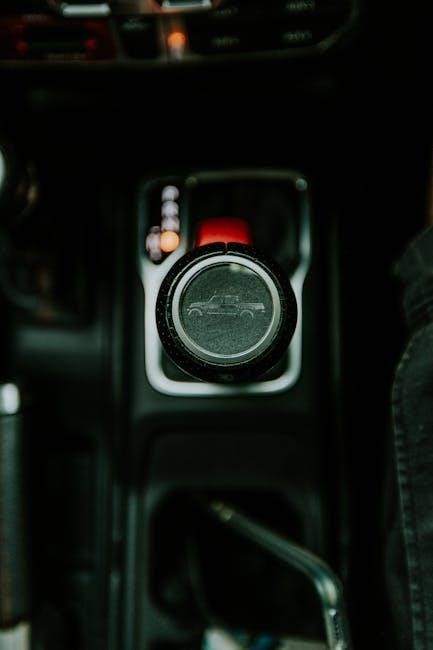
Maintenance and Repair After Conversion
Regular fluid changes and filter inspections are crucial. Professional checks every 30,000 miles ensure optimal performance. Addressing issues promptly prevents costly repairs and extends transmission lifespan.
Automatic Transmission Maintenance Tips
Regular fluid changes and filter inspections are essential. Check transmission fluid level monthly and replace it every 30,000-60,000 miles. Avoid extreme temperatures and heavy towing. Use the correct ATF type for your vehicle. Monitor for slipping or unusual noises. Keep the cooling system in good condition. Avoid riding the brake on long descents. Ensure proper engine performance, as it directly affects transmission function. Schedule professional inspections every 30,000 miles to identify potential issues early.
Common Issues Post-Conversion
Post-conversion issues may include fluid leaks, improper torque converter installation, and compatibility problems between the engine and automatic transmission. Electrical faults in the transmission control system can cause shifting issues. Additionally, improper calibration of the ECU may lead to poor performance. Maintenance oversights, such as infrequent fluid changes, can accelerate wear. Drivers may also experience initial difficulties adapting to automatic transmission behavior. Regular inspections and professional adjustments are crucial to address these challenges and ensure smooth operation.
Troubleshooting Techniques
Common post-conversion issues like fluid leaks, slipping gears, or erratic shifting can often be traced to improper installation or compatibility problems. Start by checking the torque converter alignment and transmission fluid levels. Inspect electrical connections and ensure the ECU is properly calibrated. If slipping persists, examine the clutch pack or bands for wear. Regular fluid changes and filter replacements can prevent premature wear. For persistent issues, consult a professional or refer to the transmission’s service manual for diagnostic procedures. Early detection and repair are key to maintaining optimal performance.
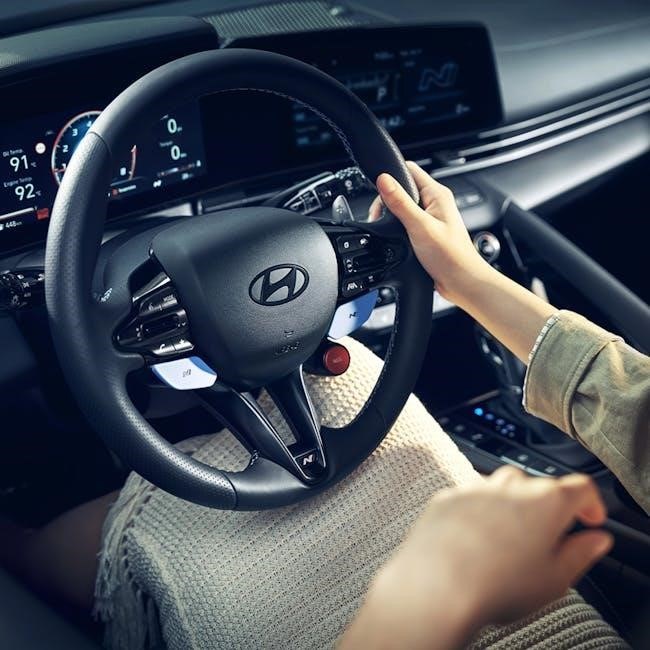
The Future of Transmission Technology
Advancements in transmission technology focus on efficiency, automation, and integration with electric vehicles, with trends like CVTs and dual-clutch systems leading the way.
Emerging Trends in Automatic Transmissions
Emerging trends in automatic transmissions include the rise of continuously variable transmissions (CVTs) and dual-clutch systems for improved efficiency and performance. Electric vehicles are also influencing transmission technology, with many adopting advanced automatic systems. Additionally, automated manual transmissions (AMTs) are gaining popularity as a cost-effective alternative to traditional automatics. These advancements aim to enhance fuel efficiency, reduce emissions, and provide smoother gear shifts, making automatic transmissions more appealing than ever before.
Impact of Electric Vehicles on Transmission Technology
Electric vehicles (EVs) are reshaping transmission technology, as they often rely on single-speed or multi-speed gearboxes rather than traditional automatic transmissions. EVs eliminate the need for complex gear shifting due to their electric motors’ wide torque range. This shift is driving innovation in simpler, more efficient transmission systems. Additionally, EVs are accelerating the development of regenerative braking technologies, which recover energy during deceleration. As EV adoption grows, the focus on lightweight and aerodynamic designs is further influencing transmission design, prioritizing efficiency over gear complexity.
Advancements in Transmission Conversion Techniques
Modern transmission conversion techniques have evolved significantly, leveraging advanced software and hardware solutions. The rise of plug-and-play conversion kits simplifies the process, reducing labor and complexity. Modular transmission designs now allow for easier compatibility with various engines, while improved diagnostic tools enable precise calibration. Additionally, the integration of electronic control units (ECUs) enhances seamless communication between the transmission and engine. These advancements make conversions more efficient and accessible, catering to a broader range of vehicles and driver preferences. Innovations continue to streamline the transition from manual to automatic, offering better performance and reliability.
Converting a manual to automatic transmission is a viable yet complex process. While it offers convenience, the costs and challenges often outweigh benefits for many drivers. Ultimately, careful consideration of needs, budget, and alternatives is essential before proceeding.
Final Thoughts on Manual to Automatic Conversion
Converting a manual transmission to automatic is a feasible but complex process, requiring careful planning, significant investment, and professional expertise. While it offers enhanced convenience, the costs and challenges often outweigh the benefits for many drivers. Those considering this conversion must weigh their driving habits, budget, and vehicle type against the practicality of the upgrade. Ultimately, it’s crucial to assess whether the benefits justify the effort and expense or if purchasing an automatic vehicle might be a more straightforward solution.
Recommendations for Potential Converts
Before proceeding with a manual to automatic conversion, carefully evaluate your driving habits, budget, and vehicle compatibility. Consider consulting a professional mechanic to assess feasibility and costs. Weigh the benefits of convenience against the complexity and expense of the process. For many, purchasing an automatic vehicle may be a more practical solution. Ensure all legal and insurance requirements are met, and plan for potential long-term maintenance costs. Thorough research and professional guidance are essential for making an informed decision.
Future Outlook for Transmission Conversions
The future of manual to automatic transmission conversions is evolving alongside automotive technology. Advancements in automatic transmissions, such as dual-clutch systems, are making conversions more efficient. Electric vehicles (EVs) are shifting focus away from traditional transmissions, but demand for automatics in internal combustion engines remains strong. As autonomous vehicles rise, manual transmissions may become obsolete, reducing the need for conversions. However, for enthusiasts, niche conversion kits and custom solutions will likely persist, catering to specific vehicle types and performance needs. The industry is adapting to meet modern demands while preserving options for specialized applications.
